Find time for healthy meal creation may seem impossible in today’s hectic lifestyle. Using simple recipes and planning, delicious yet nutritional dishes can be created in 15 minutes meals or less! In this guide we showcase various quick and healthy dishes designed specifically to cater for busy individuals looking to prioritize health without compromising taste or convenience.
Table of Contents
ToggleAdvantages of Healthy and Quick Eating
Eating healthy yet quick-and-easy meals provides both your body and mind with multiple advantages. Here are just a few reasons why including such recipes in your routine may prove fruitful:
1. Save Time: With increasingly hectic lifestyles, time can quickly slip away. Opting for quick meals that still provide essential nutrition can help save precious minutes while cutting costs without compromising nutrition.
2. Promote Health & Well-Being: Fast and healthy recipes often offer essential vitamins, minerals, and other components that contribute to overall wellness and quality of life.
3. Raise Energy Levels: Nutrition-rich meals provide your body with fuel to remain alert throughout the day and prepare you to meet whatever challenges come your way with greater ease.
4. Improves Digestion: Many quick and healthy recipes include ingredients that can easily be digested to promote better gut health and digestive efficiency, leading to greater digestive efficiency overall and helping promote overall good gut health. This contributes towards good gut wellness!
5. Decrease Stress Levels: Simplifying meal preparation can significantly decrease stress, giving you more time and space to focus on other areas of life besides just your food!
Now, Let’s dive in with 15 minutes meal solutions designed specifically to satisfy busy days:
Recipe 1: Mediterranean Quinoa Salad
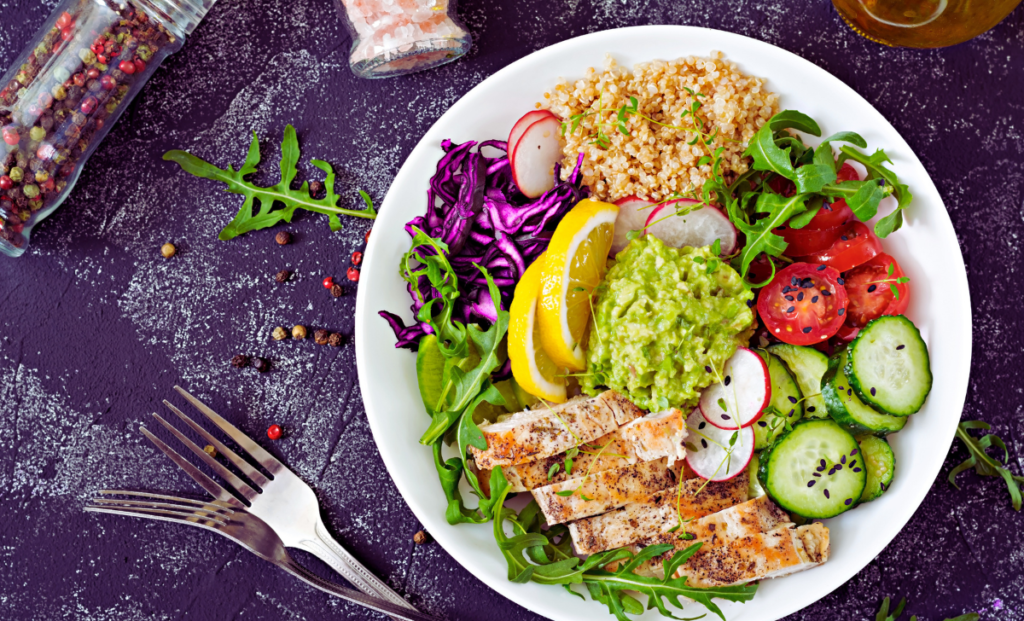
This refreshing salad is a perfect combination of protein, fiber, and healthy fats. It’s quick to prepare and bursting with Mediterranean flavors.
Ingredients
1. Cooked quinoa: Quinoa is a nutrient-rich whole grain that provides protein, fiber, and essential minerals like iron and magnesium.
2. Cherry tomatoes: These vibrant red gems are rich in antioxidants like lycopene, which may help reduce the risk of chronic diseases.
3. Cucumber: Cucumbers are low in calories and high in water content, making them hydrating and refreshing.
4. Red onion: Red onions add a bold flavor and a pop of color to the salad, along with beneficial compounds like quercetin and sulfur.
5. Kalamata olives: These briny olives add a salty kick to the salad while providing healthy fats and antioxidants.
6. Feta cheese: Feta cheese adds creaminess and tanginess to the salad, along with calcium and protein.
7. Fresh parsley: Parsley adds freshness and herbaceous flavor to the salad, along with vitamins A, C, and K.
8. Olive oil: Extra virgin olive oil is rich in heart-healthy monounsaturated fats and antioxidants like oleocanthal.
9. Lemon juice: Lemon juice adds brightness and acidity to the salad, along with vitamin C and antioxidants.
10. Salt and pepper: These seasonings enhance the flavor of the salad while providing essential minerals.
Instructions
1. In a large bowl, combine cooked quinoa, halved cherry tomatoes, diced cucumber, thinly sliced red onion, halved Kalamata olives, crumbled feta cheese, and chopped parsley.
2. Drizzle with olive oil and lemon juice, and season with salt and pepper to taste.
3. Toss everything together until well combined.
4. Serve immediately or refrigerate for later.
Benefits
This salad is rich in antioxidants, vitamins, and minerals, making it a nutritious and satisfying option for a quick meal. The combination of quinoa and vegetables provides fiber for digestion and essential nutrients for overall health.
Tips: To save even more time, you can cook the quinoa in advance and store it in the refrigerator until ready to use. You can also customize the salad by adding other Mediterranean ingredients like roasted red peppers, artichoke hearts, or chickpeas.
Recipe 2: Veggie Stir-Fry with Tofu
Stir-fries are a staple in many households for good reason – they’re quick, versatile, and packed with flavor. This veggie stir-fry with tofu is no exception.
Ingredients
Firm tofu: Tofu is a plant-based source of protein that’s low in calories and high in nutrients like iron, calcium, and magnesium.
1. Mixed vegetables: Choose a variety of colorful vegetables like bell peppers, broccoli, snap peas, and carrots for added vitamins, minerals, and antioxidants.
2. Garlic: Garlic adds depth of flavor to the stir-fry while providing potential health benefits like immune support and heart health.
3. Ginger: Fresh ginger adds a spicy kick and aromatic flavor to the stir-fry, along with compounds like gingerol that have anti-inflammatory properties.
4. Soy sauce: Soy sauce adds umami flavor and saltiness to the stir-fry, but you can also use tamari for a gluten-free option.
5. Sesame oil: Toasted sesame oil adds a nutty flavor and richness to the stir-fry, enhancing its overall taste.
6. Red pepper flakes (optional): For those who like a bit of heat, red pepper flakes can be added to the stir-fry for a spicy kick.
7. Cooked rice or noodles: Serve the stir-fry over cooked rice or noodles for a complete and satisfying meal.
Instructions
1. Press the tofu to remove excess moisture, then cut it into cubes.
2. Heat a tablespoon of sesame oil in a large skillet or wok over medium-high heat. Add the tofu cubes and cook until golden brown on all sides. Remove from the skillet and set aside.
3. In the same skillet, add a bit more sesame oil if needed, then add minced garlic and ginger. Cook for about 30 seconds until fragrant.
4. Add the mixed vegetables to the skillet and stir-fry until tender-crisp.
5. Return the tofu to the skillet and add soy sauce and red pepper flakes if using. Cook for another minute or until everything is heated through.
6. Serve the stir-fry over cooked rice or noodles.
Benefits
This veggie stir-fry is a great way to pack in a variety of colorful vegetables, which are rich in vitamins, minerals, and antioxidants. Tofu adds plant-based protein, making this dish both satisfying and nutritious. Plus, it’s a great way to use up any leftover vegetables you have on hand.
Tips: To save time on chopping, you can use pre-cut vegetables from the grocery store. You can also prepare a double batch of tofu and freeze the extra for future stir-fries.
Recipe 3: Avocado Toast with Poached Eggs

Avocado toast has become a breakfast favorite for many, and for good reason – it’s delicious, nutritious, and incredibly easy to make. Adding a poached egg on top takes it to the next level.
Ingredients
Whole grain bread: Choose a hearty whole grain bread that’s high in fiber and nutrients for the base of your avocado toast.
1. Ripe avocado: Avocado is rich in heart-healthy monounsaturated fats, fiber, and vitamins like vitamin K, vitamin E, and folate.
2. Eggs: Eggs are a complete protein source that provides essential amino acids, along with vitamins and minerals like vitamin D, vitamin B12, and choline.
3. Salt and pepper: These seasonings enhance the flavor of the avocado toast while providing essential minerals.
Instructions
1.Toast the bread until golden brown and crispy.
2. While the bread is toasting, mash the ripe avocado in a bowl and season with salt and pepper to taste.
3.Poach the eggs: Bring a pot of water to a simmer, then gently crack the eggs into the water one at a time. Cook for about 3-4 minutes until the whites are set but the yolks are still runny.
4. Spread the mashed avocado onto the toasted bread.
5. Carefully remove the poached eggs from the water using a slotted spoon and place them on top of the avocado toast.
6. Sprinkle with additional toppings if desired, such as cherry tomatoes, red pepper flakes, or fresh herbs.
Benefits
Avocado toast is a nutrient-rich breakfast option that provides healthy fats, fiber, and protein to keep you feeling full and satisfied until your next meal. Adding poached eggs increases the protein content, making it an excellent choice for a balanced breakfast.
Tips: To save time, you can use a store-bought guacamole or avocado spread instead of mashing the avocado yourself. You can also prepare the poached eggs in advance and store them in the refrigerator for up to two days.
Recipe 4: One-Pot Lentil Soup
One-pot meals are a lifesaver on busy days, and this lentil soup is no exception. It’s hearty, flavorful, and incredibly easy to make – plus, it’s packed with protein and fiber.
Ingredients
1. Green or brown lentils: Lentils are a nutritional powerhouse that provides protein, fiber, and essential nutrients like iron, folate, and potassium.
2. Vegetable broth: Use low-sodium vegetable broth as the base of the soup for added flavor. You can also use homemade broth or water with bouillon cubes.
3. Onion: Onion adds flavor and aroma to the soup, along with beneficial compounds like quercetin and sulfur.
4. Carrots: Carrots add sweetness and color to the soup, along with vitamins like vitamin A, vitamin C, and beta-carotene.
5. Celery: Celery adds a subtle earthy flavor and crunch to the soup, along with vitamins, minerals, and antioxidants.
6. Garlic: Garlic adds depth of flavor to the soup while providing potential health benefits like immune support and heart health.
7. Cumin: Cumin adds warmth and earthiness to the soup, enhancing its overall flavor profile.
8. Paprika: Paprika adds a smoky sweetness and vibrant color to the soup, along with antioxidants like beta-carotene.
9. Salt and pepper: These seasonings enhance the flavor of the soup while providing essential minerals.
Instructions
1. In a large pot, heat a bit of olive oil over medium heat. Add diced onion, carrots, and celery, and cook until softened.
2. Add minced garlic, cumin, paprika, salt, and pepper, and cook for another minute until fragrant.
3. Add rinsed lentils and vegetable broth to the pot. Bring to a boil, then reduce heat and simmer for about 15-20 minutes until the lentils are tender.
4. Taste and adjust seasoning as needed.
5. Serve hot, garnished with fresh parsley if desired.
Benefits
Lentils are a nutritional powerhouse, packed with protein, fiber, vitamins, and minerals. This one-pot lentil soup is not only delicious and comforting but also incredibly nutritious, making it a perfect option for a quick and healthy meal.
Tips: To save time on chopping, you can use pre-cut vegetables from the grocery store. You can also prepare a double batch of soup and freeze the extra for future meals.
Recipe 5: Sheet Pan Salmon and Vegetables
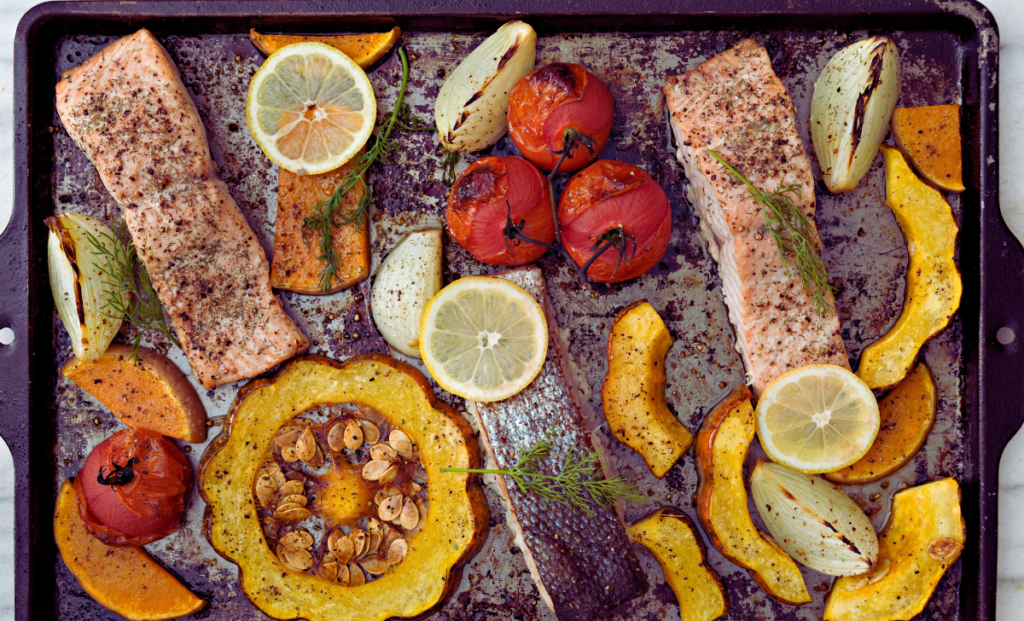
Sheet pan meals are a game-changer when it comes to easy and efficient cooking. This sheet pan salmon and vegetables recipe requires minimal prep and cleanup, making it perfect for busy weeknights.
Ingredients
1. Salmon fillets: Salmon is rich in omega-3 fatty acids, which are essential for heart health and brain function. Choose wild-caught salmon for the highest quality and flavor.
2. Assorted vegetables: Choose a variety of colorful vegetables like bell peppers, zucchini, cherry tomatoes, and asparagus for added vitamins, minerals, and antioxidants.
3. Olive oil: Extra virgin olive oil is rich in heart-healthy monounsaturated fats and antioxidants like oleocanthal.
4. Lemon: Lemon adds brightness and acidity to the dish, along with vitamin C and antioxidants.
5. Garlic: Garlic adds depth of flavor to the dish while providing potential health benefits like immune support and heart health.
6. Dried herbs: Use dried herbs like thyme, rosemary, or oregano to season the salmon and vegetables.
7. Salt and pepper: These seasonings enhance the flavor of the dish while providing essential minerals.
Instructions
1. Preheat your oven to 400°F (200°C). Line a large baking sheet with parchment paper or aluminum foil for easy cleanup.
2. Place the salmon fillets on one side of the baking sheet and arrange the chopped vegetables on the other side.
3. Drizzle everything with olive oil and freshly squeezed lemon juice, then season with minced garlic, dried herbs, salt, and pepper.
4.Toss everything together until the salmon and vegetables are evenly coated.
5. Roast in the preheated oven for 12-15 minutes, or until the salmon is cooked through and the vegetables are tender.
6. Serve immediately, garnished with fresh herbs if desired.
Benefits
Salmon is rich in omega-3 fatty acids, which are essential for heart health and brain function. Pairing it with a variety of colorful vegetables adds vitamins, minerals, and antioxidants to your meal, making it both nutritious and delicious.
Tips: To save time on chopping, you can use pre-cut vegetables from the grocery store. You can also line the baking sheet with aluminum foil for easy cleanup.
Recipe 6: Quinoa and Black Bean Burrito Bowl
Burrito bowls are a versatile and customizable meal option that can be tailored to suit your taste preferences. This quinoa and black bean burrito bowl is packed with protein, fiber, and flavor.
Ingredients:
1. Cooked quinoa: Quinoa is a complete protein source that provides all nine essential amino acids, along with fiber, vitamins, and minerals.
2. Black beans: Black beans are rich in protein, fiber, and antioxidants, making them a nutritious addition to any meal.
3. Corn: Corn adds sweetness and crunch to the burrito bowl, along with vitamins, minerals, and antioxidants.
4. Cherry tomatoes: Cherry tomatoes add freshness and color to the burrito bowl, along with vitamins, minerals, and antioxidants.
5. Avocado: Avocado adds creaminess and healthy fats to the burrito bowl, along with vitamins, minerals, and antioxidants.
6. Red onion: Red onion adds a bold flavor and a pop of color to the burrito bowl, along with beneficial compounds like quercetin and sulfur.
7. Cilantro: Cilantro adds freshness and herbaceous flavor to the burrito bowl, along with vitamins, minerals, and antioxidants.
8. Lime: Lime adds brightness and acidity to the burrito bowl, along with vitamin C and antioxidants.
9. Cumin: Cumin adds warmth and earthiness to the burrito bowl, enhancing its overall flavor profile.
10. Chili powder: Chili powder adds heat and smokiness to the burrito bowl, along with antioxidants like capsaicin.
11, Salt and pepper: These seasonings enhance the flavor of the burrito bowl while providing essential minerals.
Instructions
1. In a large bowl, combine cooked quinoa, rinsed black beans, corn kernels, halved cherry tomatoes, diced avocado, finely chopped red onion, and chopped cilantro.
2. Squeeze fresh lime juice over the mixture and season with cumin, chili powder, salt, and pepper to taste.
3. Toss everything together until well combined.
4. Serve the burrito bowl with additional toppings such as shredded cheese, salsa, or Greek yogurt if desired.
Benefits
This quinoa and black bean burrito bowl is not only delicious but also incredibly nutritious. Quinoa is a complete protein source, meaning it contains all nine essential amino acids, while black beans provide additional protein and fiber. Plus, the array of colorful vegetables adds vitamins, minerals, and antioxidants to your meal.
Tips: To save time, you can cook a large batch of quinoa and black beans ahead of time and store them in the refrigerator or freezer for future use. You can also customize the burrito bowl with your favorite toppings and sauces.
Recipe 7: Chicken and Vegetable Stir-Fry
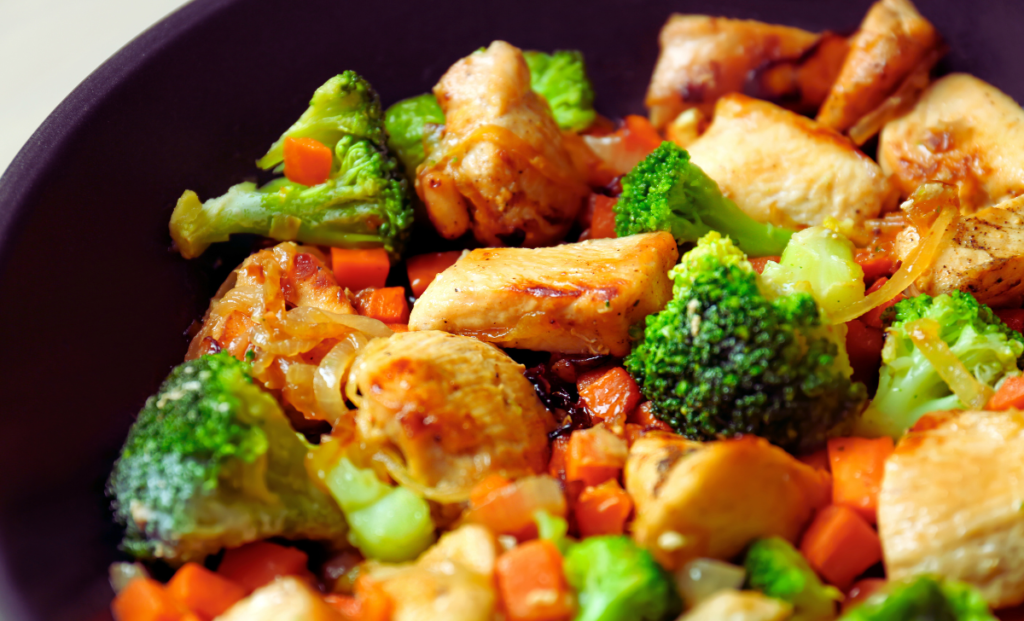
Stir-fries are a quick and convenient way to incorporate protein and vegetables into your diet. This chicken and vegetable stir-fry is bursting with flavor and can be customized with your favorite veggies.
Ingredients
1. Boneless, skinless chicken breast or thighs: Chicken is a lean source of protein that provides essential amino acids, along with vitamins and minerals like niacin, vitamin B6, and selenium.
2. Assorted vegetables: Choose a variety of colorful vegetables like bell peppers, broccoli, snap peas, and carrots for added vitamins, minerals, and antioxidants.
3. Garlic: Garlic adds depth of flavor to the stir-fry while providing potential health benefits like immune support and heart health.
4. Ginger: Fresh ginger adds a spicy kick and aromatic flavor to the stir-fry, along with compounds like gingerol that have anti-inflammatory properties.
5. Soy sauce: Soy sauce adds umami flavor and saltiness to the stir-fry, but you can also use tamari for a gluten-free option.
6. Sesame oil: Toasted sesame oil adds a nutty flavor and richness to the stir-fry, enhancing its overall taste.
7. Red pepper flakes (optional): For those who like a bit of heat, red pepper flakes can be added to the stir-fry for a spicy kick.
8. Cooked rice or noodles: Serve the stir-fry over cooked rice or noodles for a complete and satisfying meal.
Instructions:
1. Slice the chicken breast or thighs into thin strips.
2. Heat a tablespoon of sesame oil in a large skillet or wok over medium-high heat. Add the sliced chicken and cook until golden brown and cooked through. Remove from the skillet and set aside.
3. In the same skillet, add a bit more sesame oil if needed, then add minced garlic and ginger. Cook for about 30 seconds until fragrant.
4. Add the assorted vegetables to the skillet and stir-fry until tender-crisp.
5. Return the cooked chicken to the skillet and add soy sauce and red pepper flakes if using. Cook for another minute or until everything is heated through.
6. Serve the stir-fry over cooked rice or noodles.
Benefits
This chicken and vegetable stir-fry is a balanced meal that provides protein, fiber, vitamins, and minerals. It’s a great way to use up leftover vegetables and can be customized with your favorite sauces and seasonings for endless flavor variations.
Tips: To save time on slicing, you can use pre-cut vegetables from the grocery store. You can also prepare the sauce in advance and store it in the refrigerator until ready to use.
Recipe 8: Greek Yogurt Parfait with Fresh Fruit
Greek yogurt parfaits are a quick and nutritious option for breakfast or snack time. They’re packed with protein, probiotics, and fresh fruit, making them a delicious and satisfying choice.
Ingredients:
1. Greek yogurt: Greek yogurt is strained to remove excess whey, resulting in a thicker and creamier texture that’s higher in protein and lower in carbohydrates compared to regular yogurt.
2. Fresh fruit: Choose a variety of fresh fruit like berries, sliced bananas, or diced mango for added vitamins, minerals, and antioxidants.
3. Granola or nuts: Add granola or nuts for crunch and texture, along with fiber, healthy fats, and protein.
4. Honey or maple syrup (optional): For a touch of sweetness, drizzle honey or maple syrup over the parfait.
Instructions
1. Start by layering Greek yogurt in the bottom of a glass or bowl.
2. Top the yogurt with a layer of fresh fruit.
3. Sprinkle granola or nuts on top for added crunch and texture.
4. Repeat the layers until the glass or bowl is full.
5. Drizzle with honey or maple syrup if desired.
6. Serve immediately and enjoy!
Benefits
Greek yogurt is a great source of protein and probiotics, which support digestive health and immune function. Adding fresh fruit provides vitamins, minerals, and antioxidants, while granola or nuts add fiber and healthy fats to keep you feeling full and satisfied
Tips: To save time, you can assemble the parfaits in advance and store them in the refrigerator until ready to serve. You can also customize the parfaits with your favorite toppings or add-ins.
Recipe 9: Peanut Butter Banana Smoothie
Smoothies are a quick and convenient way to pack in a variety of nutrients in one delicious drink. This peanut butter banana smoothie is creamy, satisfying, and perfect for breakfast or snack time.
Ingredients
1. Ripe banana: Bananas are rich in potassium, fiber, and vitamins like vitamin B6 and vitamin C, making them a nutritious base for smoothies.
2. Peanut butter: Peanut butter adds creaminess and protein to the smoothie, along with healthy fats, vitamins, and minerals like vitamin E, magnesium, and phosphorus.
3. Greek yogurt: Greek yogurt adds creaminess and protein to the smoothie, along with probiotics that support digestive health.
4. Milk: Use dairy or plant-based milk like almond milk, soy milk, or coconut milk as the liquid base for the smoothie.
5. Honey or maple syrup (optional): For a touch of sweetness, drizzle honey or maple syrup into the smoothie.
Instructions
1. In a blender, combine a ripe banana, a spoonful of peanut butter, a scoop of Greek yogurt, a splash of milk, and a drizzle of honey or maple syrup if desired.
2. Add a handful of ice cubes to the blender to make the smoothie cold and refreshing.
3. Blend until smooth and creamy, adding more milk as needed to reach your desired consistency.
4. Pour the smoothie into a glass and enjoy immediately.
Benefits
This peanut butter banana smoothie is rich in protein, fiber, and healthy fats, making it a satisfying and nutritious option for breakfast or snack time. It’s also a great way to use up ripe bananas and customize with your favorite toppings or add-ins.
Tips: To save time, you can freeze ripe bananas in advance and use them in smoothies straight from the freezer. You can also prep smoothie ingredients in advance and store them in individual portions in the freezer for quick and easy blending.
Recipe 10: Veggie Omelette
Omelettes are a classic breakfast option that can be customized with your favorite vegetables, cheeses, and proteins. This quick veggie omelette is packed with nutrients and flavor, making it a perfect start to your day.
Ingredients
1. Eggs: Eggs are a complete protein source that provides all nine essential amino acids, along with vitamins and minerals like vitamin D, vitamin B12, and choline.
2. Assorted vegetables: Choose a variety of colorful vegetables like bell peppers, spinach, mushrooms, and onions for added vitamins, minerals, and antioxidants.
3. Cheese (optional): Add cheese for extra flavor and creaminess. Choose varieties like cheddar, feta, or goat cheese.
4. Olive oil or butter: Use olive oil or butter to cook the omelette and prevent sticking to the pan.
5. Salt and pepper: These seasonings enhance the flavor of the omelette while providing essential minerals.
Instructions
1. Heat a bit of olive oil or butter in a non-stick skillet over medium heat.
2. Add chopped vegetables to the skillet and cook until softened.
3. In a bowl, whisk together eggs, salt, and pepper until well combined.
4. Pour the egg mixture over the cooked vegetables in the skillet.
5. Cook the omelette for a few minutes until the edges start to set.
6. Once the edges are set, use a spatula to gently lift the edges of the omelette and let the uncooked eggs flow underneath.
7. Continue cooking until the omelette is set but still slightly runny in the center.
8. If using cheese, sprinkle it over one half of the omelette.
9. Fold the omelette in half and cook for another minute until the cheese is melted and the omelette is cooked through.
10. Slide the omelette onto a plate and serve hot.
Benefits
Omelettes are a great way to incorporate vegetables into your breakfast and start your day off on the right foot. Eggs are a complete protein source, meaning they contain all nine essential amino acids, while vegetables add vitamins, minerals, and antioxidants to your meal.
Tips: To save time, you can chop the vegetables in advance and store them in the refrigerator until ready to use. You can also customize the omelette with your favorite fillings or leftovers from the fridge.
Recipe 11: Turkey and Hummus Wrap
Wraps are a convenient and portable meal option that can be enjoyed on the go. This turkey and hummus wrap is packed with protein, fiber, and flavor, making it a satisfying and nutritious choice for lunch or dinner.
Ingredients
1. Whole grain tortilla or wrap: Choose a whole grain tortilla or wrap for added fiber and nutrients.
2. Sliced turkey breast: Turkey breast is a lean source of protein that provides essential amino acids, along with vitamins and minerals like niacin, vitamin B6, and selenium.
3. Hummus: Hummus adds creaminess and flavor to the wrap, along with protein, healthy fats, and fiber.
4. Baby spinach or mixed greens: Leafy greens add vitamins, minerals, and antioxidants to the wrap, along with fiber for digestion.
5. Sliced cucumber: Cucumber adds freshness and crunch to the wrap, along with hydration and vitamins like vitamin K and potassium.
6. Sliced tomato: Tomato adds juiciness and sweetness to the wrap, along with vitamins like vitamin C and antioxidants.
7. Red onion (optional): Red onion adds a bold flavor and a pop of color to the wrap, along with beneficial compounds like quercetin and sulfur.
8. Feta cheese (optional): Feta cheese adds tanginess and creaminess to the wrap, along with calcium and protein.
Instructions
1. Lay the whole grain tortilla or wrap flat on a clean surface.
2. Spread a generous layer of hummus onto the tortilla, leaving a border around the edges.
3. Layer sliced turkey breast, baby spinach or mixed greens, sliced cucumber, sliced tomato, red onion (if using), and crumbled feta cheese (if using) on top of the hummus.
4. Fold in the sides of the tortilla, then roll it up tightly from the bottom to enclose the filling.
5. Slice the wrap in half diagonally for easy eating, if desired.
6. Serve immediately or wrap tightly in plastic wrap for later.
Benefits
This turkey and hummus wrap is a balanced meal option that provides protein, fiber, vitamins, and minerals. Turkey is a lean source of protein, while hummus adds healthy fats and fiber. Adding a variety of vegetables increases the nutrient density of the wrap, making it both delicious and nutritious.
Tips: To save time, you can prep the wrap ingredients in advance and assemble the wraps as needed. You can also customize the wraps with your favorite vegetables, spreads, and cheeses.
Recipe 12: Quickest Chicken Caesar Salad
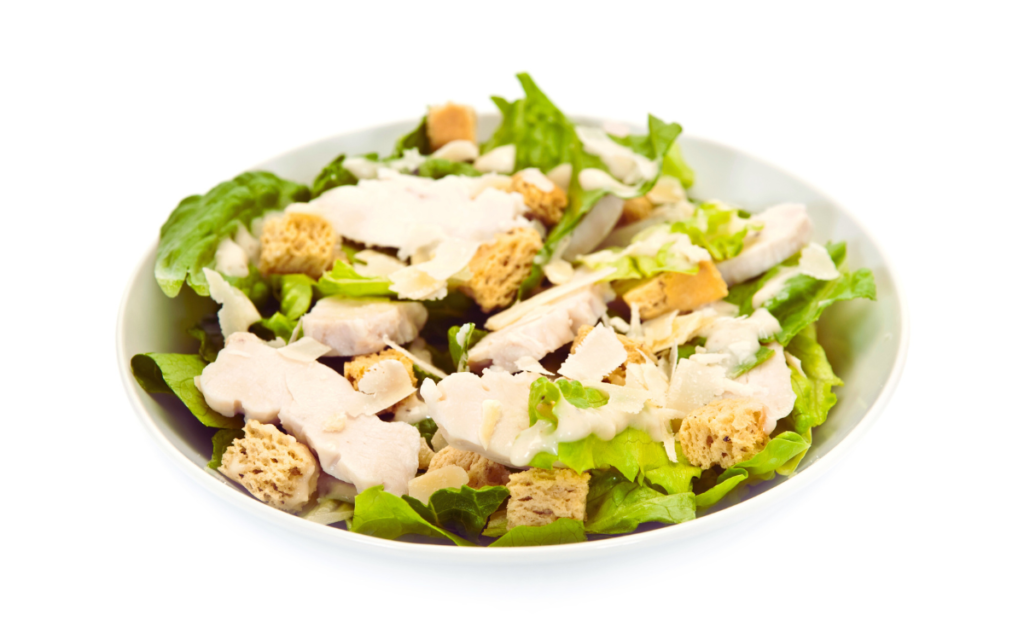
Chicken Caesar salad is a classic dish that’s both satisfying and delicious. This quickest version cuts down on prep time without sacrificing flavor, making it perfect for busy weeknights.
Ingredients
1. Cooked chicken breast or thighs: Chicken breast or thighs add protein and flavor to the salad, along with vitamins and minerals like niacin, vitamin B6, and selenium.
2. Romaine lettuce: Romaine lettuce is rich in vitamins A and K, along with fiber for digestion and hydration.
3. Caesar dressing: Use store-bought or homemade Caesar dressing for flavor and creaminess. Look for options made with natural ingredients and minimal additives.
4. Croutons: Croutons add crunch and texture to the salad, along with carbohydrates for energy.
5. Grated Parmesan cheese: Parmesan cheese adds nuttiness and saltiness to the salad, along with calcium and protein.
6 Lemon wedges (for serving): Lemon wedges add brightness and acidity to the salad, along with vitamin C and antioxidants.
Instructions
1. Shred or slice cooked chicken breast or thighs into bite-sized pieces.
2. Wash and chop romaine lettuce into bite-sized pieces.
3. In a large bowl, combine the chopped romaine lettuce, shredded chicken, Caesar dressing, and croutons.
4. Toss everything together until the lettuce is evenly coated with dressing.
5. Divide the salad among serving plates and top with grated Parmesan cheese.
6. Serve immediately with lemon wedges on the side for squeezing over the salad.
Benefits
This quickest chicken Caesar salad is a balanced meal option that provides protein, fiber, vitamins, and minerals. Romaine lettuce is rich in vitamins A and K, while chicken breast or thighs add lean protein. Adding croutons and Parmesan cheese adds texture and flavor to the salad, making it a satisfying and delicious meal.
Tips: To save time, you can use pre-cooked chicken from the grocery store or leftovers from a previous meal. You can also make a double batch of dressing and store it in the refrigerator for future salads.
Recipe 13: Speedy Veggie Quesadillas
Quesadillas are a quick and easy meal option that can be customized with your favorite fillings. These speedy veggie quesadillas are packed with flavor and nutrients, making them perfect for busy nights.
Ingredients
1. Whole grain tortillas: Choose whole grain tortillas for added fiber and nutrients.
2. Shredded cheese: Use your favorite cheese for melting, such as cheddar, Monterey Jack, or pepper jack.
3. Assorted vegetables: Choose a variety of colorful vegetables like bell peppers, onions, mushrooms, and spinach for added vitamins, minerals, and antioxidants.
4. Olive oil or butter: Use olive oil or butter to cook the quesadillas and prevent sticking to the pan.
5. Salsa or guacamole (for serving): Serve the quesadillas with salsa, guacamole, or your favorite dipping sauce for extra flavor.
Instructions
1. Heat a bit of olive oil or butter in a large skillet over medium heat.
2. Place a whole grain tortilla in the skillet and sprinkle shredded cheese evenly over one half of the tortilla.
3. Add assorted vegetables on top of the cheese.
4. Fold the empty half of the tortilla over the filling to create a half-moon shape.
5. Cook the quesadilla for a few minutes on each side until the cheese is melted and the tortilla is golden brown and crispy.
6. Remove the quesadilla from the skillet and cut it into wedges.
7. Serve immediately with salsa, guacamole, or your favorite dipping sauce on the side.
Benefits
These speedy veggie quesadillas are a balanced meal option that provides fiber, vitamins, and minerals from the whole grain tortillas and assorted vegetables. Adding cheese adds protein and calcium, making these quesadillas both nutritious and delicious.
Tips: To save time, you can use pre-shredded cheese and pre-cut vegetables from the grocery store. You can also cook the quesadillas in advance and reheat them in the microwave for a quick meal.
Recipe 14: 10-Minute Caprese Pasta Salad
Pasta salad is a versatile dish that can be enjoyed as a side dish or a main course. This 10-minute Caprese pasta salad is quick to prepare and bursting with flavor, making it perfect for busy days.
Ingredients
1. Pasta: Choose your favorite pasta shape for the salad, such as penne, rotini, or farfalle.
2. Cherry tomatoes: Cherry tomatoes add sweetness and acidity to the salad, along with vitamins, minerals, and antioxidants.
3. Fresh mozzarella balls: Fresh mozzarella balls add creaminess and richness to the salad, along with calcium and protein.
4. Fresh basil: Basil adds freshness and herbaceous flavor to the salad, along with vitamins, minerals, and antioxidants.
5. Balsamic glaze: Balsamic glaze adds sweetness and tanginess to the salad, enhancing its overall flavor profile.
6. Olive oil: Extra virgin olive oil adds richness and depth of flavor to the salad, along with heart-healthy monounsaturated fats.
7. Salt and pepper: These seasonings enhance the flavor of the salad while providing essential minerals.
Instructions
1. Cook the pasta according to package instructions until al dente. Drain and rinse under cold water to stop the cooking process.
2. In a large bowl, combine the cooked pasta, halved cherry tomatoes, fresh mozzarella balls, and chopped basil.
3. Drizzle with balsamic glaze and olive oil, and season with salt and pepper to taste.
4.Toss everything together until well combined.
5.Serve immediately or refrigerate for later.
Benefits:
This 10-minute Caprese pasta salad is a balanced meal option that provides carbohydrates, protein, and healthy fats. Cherry tomatoes and fresh basil add vitamins, minerals, and antioxidants, while fresh mozzarella balls add calcium and protein. Plus, it’s a great way to use up leftover pasta and customize with your favorite ingredients.
Tips: To save time, you can cook the pasta in advance and store it in the refrigerator until ready to use. You can also customize the salad with additional ingredients like grilled chicken, roasted vegetables, or olives.
Recipe 15: Speedy Tuna Salad
Tuna salad is a quick and easy meal option that can be enjoyed on its own, as a sandwich filling, or as a topping for salads. This speedy tuna salad is packed with protein and flavor, making it perfect for busy days.
Ingredients
1. Canned tuna: Choose your favorite canned tuna, such as solid white albacore or chunk light tuna packed in water or olive oil.
2. Greek yogurt: Greek yogurt adds creaminess and protein to the tuna salad, along with probiotics that support digestive health.
3. Dijon mustard: Dijon mustard adds tanginess and flavor to the tuna salad, enhancing its overall taste.
4. Lemon juice: Lemon juice adds brightness and acidity to the tuna salad, along with vitamin C and antioxidants.
5. Celery: Celery adds crunch and freshness to the tuna salad, along with vitamins, minerals, and antioxidants.
6. Red onion: Red onion adds a bold flavor and a pop of color to the tuna salad, along with beneficial compounds like quercetin and sulfur.
7. Salt and pepper: These seasonings enhance the flavor of the tuna salad while providing essential minerals.
Instructions
1. Drain the canned tuna and transfer it to a mixing bowl.
2. Add Greek yogurt, Dijon mustard, lemon juice, finely chopped celery, and diced red onion to the bowl.
3. Season with salt and pepper to taste.
4. Stir everything together until well combined.
5. Serve the tuna salad on its own, as a sandwich filling, or as a topping for salads.
Benefits
This speedy tuna salad is a balanced meal option that provides protein, healthy fats, and essential nutrients. Tuna is rich in protein and omega-3 fatty acids, while Greek yogurt adds additional protein and probiotics. Adding celery and red onion adds vitamins, minerals, and antioxidants to the salad, making it both nutritious and delicious.
Tips: To save time, you can use pre-cooked tuna packets instead of canned tuna. You can also customize the tuna salad with additional ingredients like diced apples, chopped walnuts, or dried cranberries for extra flavor and texture.
Conclusion
Incorporating quick and healthy recipes into your routine doesn’t have to be complicated. With these 15-minute meal ideas, you can enjoy delicious and nutritious dishes without spending hours in the kitchen. Whether you’re cooking for yourself or feeding a family, these recipes are sure to please even the busiest of schedules. So why wait? Start cooking and enjoy the benefits of quick and healthy eating today!

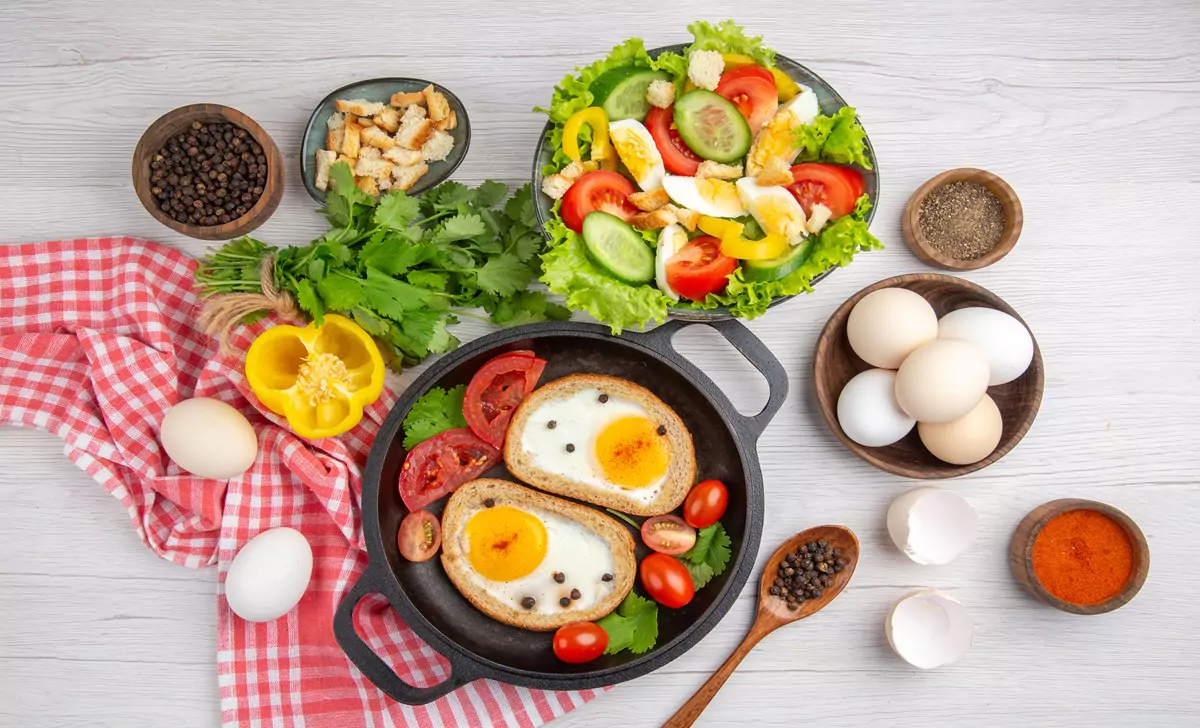
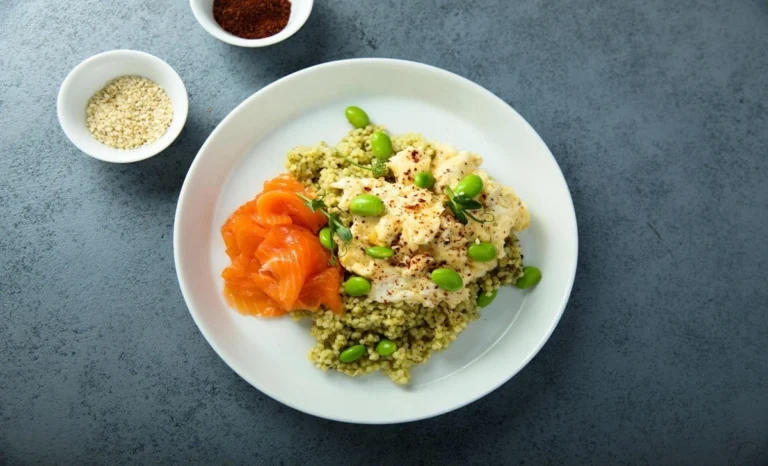
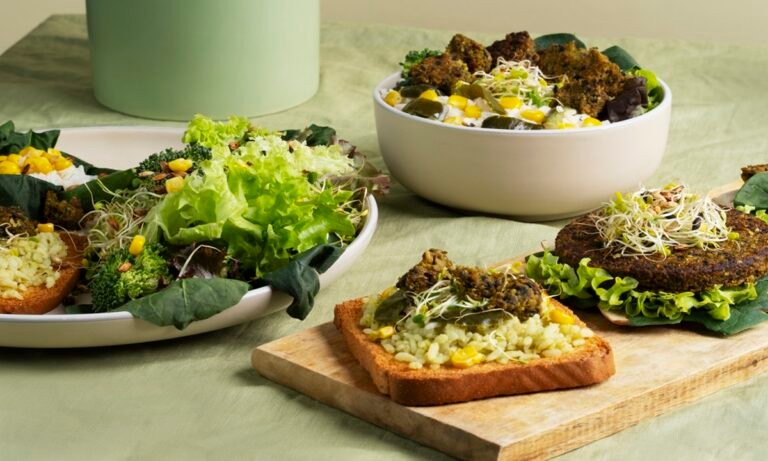
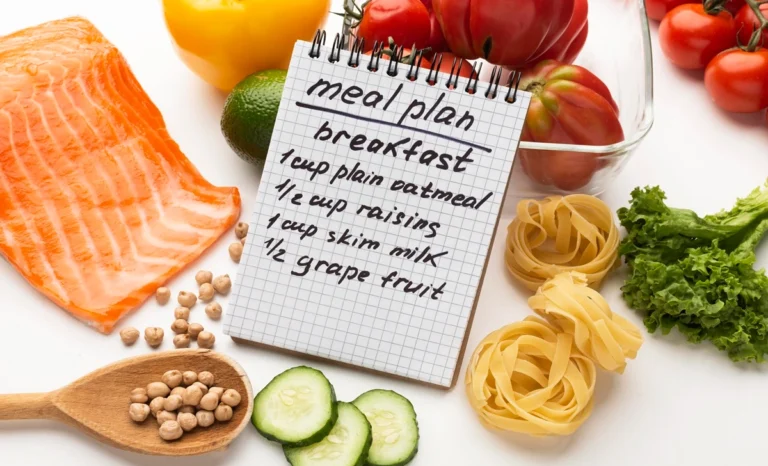



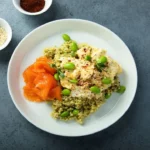
Nourish your body, enhance your life!
Elevate your health with every purchase!
Nourish your body, enrich your life!
Connect with wellness; supplements can take you there!
Elevate your lifestyle with supplements!
vtkqj3vk4tuqjhwejhqw – purehealththrive.com
https://aqualcugh.info
[…] such as chia and flax perfectly balance fiber and protein, two key elements for maintaining a healthy diet. Fiber supports digestive health, while protein […]
Thank you for your engagement 🤝
[…] with immune-boosting nutrients, this salad strengthens your body’s defences against […]
Thank you for your engagement 🤝